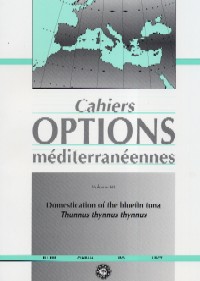| Article précédent | p. 337-341 | Article suivant |
Qualitative and quantitative pasturelands coenoses in environments with Mediterranean climate of the Apulia region of Italy
Knowledge of floristic species provides scientific information which can result in proposals for protecting the environment and the landscape of prairies, improving biomass production for animals and preserving typical organoleptic characteristics of dairy products. Rangelands in the region of Pouilles, southern Italy, account for 6.6 per cent of the surface area and 33.5 per cent of the livestock of the national survey. This study aims at assessing potential biomass yield, floristic species, and nutritional value of grasses present in the rangeland. It was conducted for three years (1997-1999) in twenty grazing sites. Rangeland dry matter annual production was 2.1 t per ha and 1588 MFU per ha with a range of variation of around 30 per cent depending on the site. The most abundant grasses in the prairies were Gramineae, Leguminosae, Liliaceae, Labiatae, Caryophyllaceae and Rubiaceae. As an effect of prairie coenose variability, chemical properties of the grass were different between prairies.
- [ Télécharger ]
- [ Exporter la citation ]
Vous pouvez télécharger la citation au format :
- [ Imprimer ]
- [OMC62]




